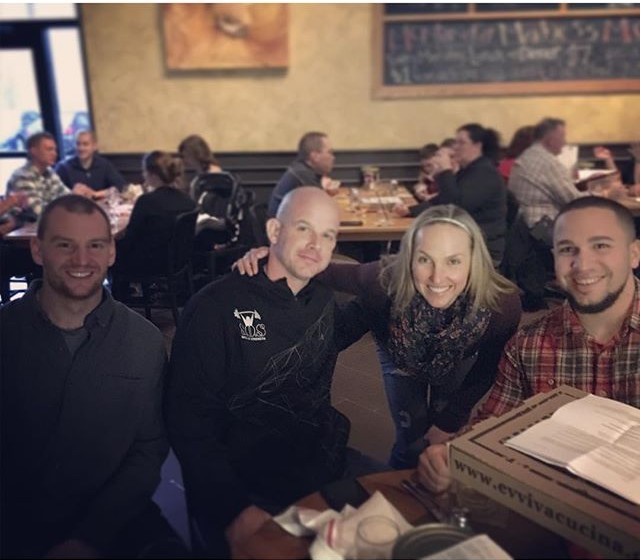I’ve been coaching for roughly 14 years. I’ve trained professional athletes, weekend warriors, kids, teenagers, collegiate athletes and everyone in between. I have learned a ton along the way and love sharing my experiences in hopes that I can help younger trainers shorten the learning curve and become a better coach.

Today I’m going to share with you some wisdom I’ve learned along the way.
1. Learn how to coach EVERYONE!
A good coach can find a way to teach anyone basic movement. If you can teach anyone to hinge, squat, split squat, lunge, push, pull and carry, you are headed in the right direction.
Let’s be honest, athletes are easy to train, and for the most part, they WANT to be there. What about your Monday morning client who has prior disc injuries, has had a knee replacement, kyphotic posture, poor should mobility and a tough time staying motivated to exercise? Can you coach this person?
Sure, the process may take a few weeks but a good coach will find ways to make this situation work. If you can positively impact clients like this, you have a client for life! Train this guy!
2. Use metrics whenever possible.
Write everything down accurately. Record sets, reps, weights lifted, distance covered, power produced, recovery time, perceived rate of exertion, etc. This is a great way to stay organized, establish an appropriate baseline for programming purposes and prove {future} results to your clients.
If you only track one thing (like pounds lifted) you might be missing the boat on progress in other areas. Clients like to see results and when you show them the proof, they will stick around! The proof is in the pudding!
3. Discover your clients learning style(s).
Everyone learns differently. Understanding how your client is wired is so important! A simple way to find this out is to ASK your client how he or she learns.
The 4 categories of learning are visual, auditory, reading and/or writing and kinesthetic. Your clients may learn best in one way or a combination of some of these categories.
Let’s take the squat as a quick example. I’ll give a brief description on how to teach clients with various learning styles how to squat.
- Squats for a visual learner. Your best bet would be to demo the squat while giving some quick teaching cues. You might need to do this several times.
- Squats for an auditory learner. You should literally talk your client through the process of doing a squat. Give your client step-by-step instructions on how to squat. For auditory learners (those who love podcasts, phone conversations, etc.), simple clear directions tend to work best and resonate most.
- Squats for someone who learns best through reading and writing. This can be a but tricky in a training setting, but the act of simply writing a list of cues and bullet points about the squat on a white board may do the trick. It seems silly, but for some, it might be exactly what they need! Another suggestion would be to teach your client the squat and follow up with an email including detailed instructions breaking the exercise down for him/her.
- Squats for a kinesthetic (hands-on) learner. Good news! You are probably already using this method if you are training clients in a gym. Once your client can feel a certain position or sensation, the goal is to replicate that over time with various loads, intensity and recovery time. Note: This is especially important in corrective exercise when the goal might be to re-educate a new pattern.
Keep in mind, most clients will learn best through a combination of learning styles. Your ability to recognize how they learn best will shorten your client’s learning curve and likely give them faster results!

4. Follow up with your clients.
You might be amazed at what a simple text or email can do when it comes to building relationships with your clients. This extra effort shows you care about your client outside of the few hours you are together at the gym.
Being a good trainer isn’t just kicking your client’s butt a few times a week. If you are a good trainer, you genuinely caring about your clients AND their progress. If you’ve ever lost sleep over a client, good! It means you actually care about your clients. Stay in tune with your clients and always reach out more than you think necessary.
5. Listen to your client.
I know this sounds a bit obvious, but it’s a game changer. Often times, clients share a ton of personal information with you, whether you like it or not.
If this happens, don’t worry, it’s actually a good thing. It means they trust you and feel comfortable enough to share their feelings. Now, pay attention!
If your client is having a stressful time at work, going through some issues with their kids, dealing with marital trouble or just having a crappy week overall, pay attention. Regardless of why, your client is stressed. These types of stressors should dictate how you work with your client. Stress is cumulative. If your client is stressed outside of the gym and then you goes to exercise (another form of stress), it could push him/her over the edge, resulting in excessive fatigue or injury.
Here are some questions to ask yourself when training a stressed-out client:
- Does your client generally feel better lifting heavy or performing a metabolic sweatfest?
- How does your client’s body react to stress? Have nagging injuries been popping up?
- Do they need more parasympathetic based sessions? For example, some breathing, stretching and light aerobic work?
I could talk for days on this topic, but the five tips above include some of the best advice I can give a young trainer looking to become a better coach.
Training is not about Excel spreadsheets, intricate programs and percentages. If you want to be a good coach you absolutely must develop genuine relationships with your clients.
Oh, also, be honest, And don’t be jerk. That goes a long way too!
Coaches, I’d love to hear from you. What’s a tip you have that makes you a better coach?


I read your post carefully. All 5 points you mention in your post are important for a professional coaching. One more point I can share with you, for a coach it is essential to improve communication skill with their student and observe all of their students carefully.